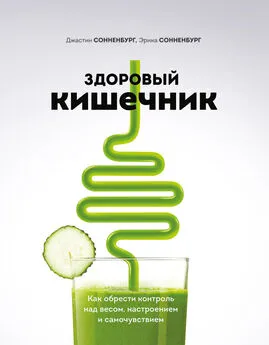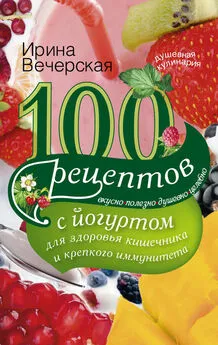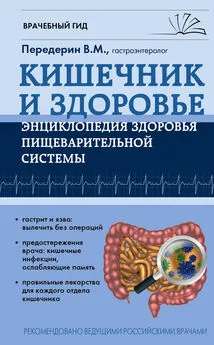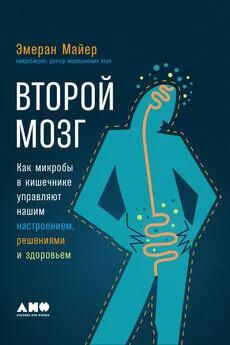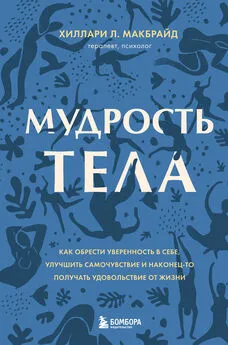Джастин Сонненбург - Здоровый кишечник. Как обрести контроль над весом, настроением и самочувствием
- Название:Здоровый кишечник. Как обрести контроль над весом, настроением и самочувствием
- Автор:
- Жанр:
- Издательство:Манн, Иванов и Фербер
- Год:2018
- Город:Москва
- ISBN:978-5-00117-564-3
- Рейтинг:
- Избранное:Добавить в избранное
-
Отзывы:
-
Ваша оценка:
Джастин Сонненбург - Здоровый кишечник. Как обрести контроль над весом, настроением и самочувствием краткое содержание
Здоровый кишечник. Как обрести контроль над весом, настроением и самочувствием - читать онлайн бесплатно ознакомительный отрывок
Интервал:
Закладка:
52
Международная научная ассоциация пробиотиков и пребиотиков.
53
В последние годы международное сообщество пытается пересмотреть определение, данное ВОЗ и приведенное в книге, но пока пользуются именно им. И действительно, не все пробиотики проверены в клинических исследованиях. Прим. науч. ред.
54
FDA требует проведения исследований, только если пробиотик планируется использовать для лечения (как лекарство).
55
Sanders, M. E., and J. T. Heimbach. “Functional Foods in the USA: Emphasis on Probiotic Foods”. Food Sci Technol Bull 1.8 (2004): 1–10. Print.
56
Cao, Y., J. Shen, and Z. H. Ran. “Association between Faecalibacterium Prausnitzii Reduction and Inflammatory Bowel Disease: A Meta-Analysis and Systematic Review of the Literature”. Gastroenterol Res Pract 2014 (2014): 872725. Print. Fujimoto, T., et al. “Decreased Abundance of Faecalibacterium prausnitzii in the Gut Microbiota of Crohn’s Disease”. J Gastroenterol Hepatol 28.4 (2013): 613–619. Print. Machiels, K., et al. “A Decrease of the Butyrate-Producing Species Roseburia Hominis and Faecalibacterium Prausnitzii Defines Dysbiosis in Patients with Ulcerative Colitis”. Gut 63.8 (2014): 1275–1283. Print. Balamurugan, R., et al. “Real-Time Polymerase Chain Reaction Quantification of Specific Butyrate-Producing Bacteria, Desulfovibrio and Enterococcus Faecalis in the Feces of Patients with Colorectal Cancer”. J Gastroenterol Hepatol 2 3.8 Pt 1 (2008): 1298–1303. Print.
57
Sokol, H., et al. “Faecalibacterium Prausnitzii Is an Anti-Inflammatory Commensal Bacterium Identified by Gut Microbiota Analysis of Crohn Disease Patients”. Proc Natl Acad Sci U S A 105.43 (2008): 16731–16736. Print.
58
Reid, R. M. “Cultural and Medical Perspectives on Geophagia”. Med Anthropol 13.4 (1992): 337–351. Print.
59
Bittner, A. C., R. M. Croffut, and M. C. Stranahan. “Prescript-Assist Probiotic-Prebiotic Treatment for Irritable Bowel Syndrome: A Methodologically Oriented, 2-Week, Randomized, Placebo-Controlled, Double-Blind Clinical Study”. Clin Ther 27.6 (2005): 755–761. Print.
60
Sonnenburg, E. D., and J. L. Sonnenburg. “Starving Our Microbial Self: The Deleterious Consequences of a Diet Deficient in Microbiota-Accessible Carbohydrates”. Cell Metab (2014). Print.
61
Russell, W. R., et al. “Colonic Bacterial Metabolites and Human Health”. Curr Opin Microbiol 16.3 (2013): 246–254. Print.
62
Torrey, J. C. “The Regulation of the Intestinal Flora of Dogs through Diet”. J Med Res 39.3 (1919): 415–447. Print.
63
Cleave, T. L. The Saccharine Disease: Conditions Caused by the Taking of Refined Carbohydrates, Such as Sugar and White Flour . Keats Publishing, 1975. Print.
64
Trowell, H. C., and D. P. Burkitt. “The Development of the Concept of Dietary Fibre”. Mol Aspects Med 9.1 (1987): 7–15. Print.
65
Martens, E. C., et al. “The Devil Lies in the Details: How Variations in Polysaccharide Fine-Structure Impact the Physiology and Evolution of Gut Microbes”. J Mol Biol (2014). Print.
66
Raninen, K., et al. “Dietary Fiber Type Reflects Physiological Functionality: Comparison of Grain Fiber, Inulin, and Polydextrose”. Nutr Rev 6 9.1 (2011): 9–21. Print.
67
Dhingra, D., et al. “Dietary Fibre in Foods: A Review”. J Food Sci Technol 49.3 (2012): 255–266. Print. Westenbrink, S., K. Brunt, and J. W. van der Kamp. “Dietary Fibre: Challenges in Production and Use of Food Composition Data”. Food Chem 140.3 (2013): 562–567. Print.
68
Sonnenburg, J. L., et al. “Glycan Foraging in Vivo by an Intestine-Adapted Bacterial Symbiont”. Science 307.5717 (2005): 1955–1959. Print.
69
Johansson, M. E., et al. “Bacteria Penetrate the Normally Impenetrable Inner Colon Mucus Layer in Both Murine Colitis Models and Patients with Ulcerative Colitis”. Gut 63.2 (2014): 281–291. Print.
70
Hehemann, J. H., et al. “Bacteria of the Human Gut Microbiome Catabolize Red Seaweed Glycans with Carbohydrate-Active Enzyme Updates from Extrinsic Microbes”. Proc Natl Acad Sci U S A 109.48 (2012): 19786–19791. Print.
71
Le Chatelier, E., et al. “Richness of Human Gut Microbiome Correlates with Metabolic Markers”. Nature 500.7464 (2013): 541–546. Print.
72
Cotillard, A., et al. “Dietary Intervention Impact on Gut Microbial Gene Richness”. Nature 500.7464 (2013): 585–588. Print.
73
Ridaura, V. K., et al. “Gut Microbiota from Twins Discordant for Obesity Modulate Metabolism in Mice”. Science 341.6150 (2013): 1241214. Print.
74
Kuoliok, K. E. Food and Emergency Food in the Circumpolar Area . Almquist och Wiksell, 1969. Print.
75
Russell, W. R., et al. “High-Protein, Reduced-Carbohydrate Weight-Loss Diets Promote Metabolite Profiles Likely to Be Detrimental to Colonic Health”. Am J Clin Nutr 93.5 (2011): 1062–1072. Print.
76
Koeth, R. A., et al. “Intestinal Microbiota Metabolism of L-Carnitine, a Nutrient in Red Meat, Promotes Atherosclerosis”. Nat Med 19.5 (2013): 576–585. Print.
77
Neufeld, K. M., et al. “Reduced Anxiety-Like Behavior and Central Neurochemical Change in Germ-Free Mice”. Neurogastroenterol Motil 23.3 (2011): 255–264, e119. Print.
78
Diaz Heijtz, R., et al. “Normal Gut Microbiota Modulates Brain Development and Behavior”. Proc Natl Acad Sci U S A 108.7 (2011): 3047–3052. Print.
79
Gareau, M. G., et al. “Bacterial Infection Causes Stress-Induced Memory Dysfunction in Mice”. Gut 60.3 (2011): 307–317. Print.
80
Bercik, P., et al. “The Intestinal Microbiota Affect Central Levels of Brain-Derived Neurotropic Factor and Behavior in Mice”. Gastroenterology 141.2 (2011): 599–609,09. e1–3. Print.
81
Riordan, S. M., and R. Williams. “Gut Flora and Hepatic Encephalopathy in Patients with Cirrhosis”. N Engl J Med 362.12 (2010): 1140–1142. Print.
82
Johnston, G. W., and H. W. Rodgers. “Treatment of Chronic Portal-Systemic Encephalopathy by Colectomy”. Br J Surg 52 (1965): 424–426. Print.
83
Aronov, P. A., et al. “Colonic Contribution to Uremic Solutes”. J Am Soc Nephrol 22.9 (2011): 1769–1776. Print.
84
Wang, Z., et al. “Gut Flora Metabolism of Phosphatidylcholine Promotes Cardiovascular Disease”. Nature 472.7341 (2011): 57–63. Print.
85
Koeth, R. A., et al. “Intestinal Microbiota Metabolism of L–Carnitine, a Nutrient in Red Meat, Promotes Atherosclerosis”. Nat Med 19.5 (2013): 576–585. Print.
86
O’Mahony, S. M., et al. “Maternal Separation as a Model of Brain-Gut Axis Dysfunction”. Psychopharmacology (Berl) 2 14.1 (2011): 71–88. Print.
87
O’Mahony, S. M., et al. “Early Life Stress Alters Behavior, Immunity, and Microbiota in Rats: Implications for Irritable Bowel Syndrome and Psychiatric Illnesses”. Biol Psychiatry 65 (2009): 263–267. Print.
88
Bailey, M. T., and C. L. Coe. “Maternal Separation Disrupts the Integrity of the Intestinal Microflora in Infant Rhesus Monkeys”. Dev Psychobiol 35.2 (1999): 146–155. Print.
89
Lyte, M., et al. “Induction of Anxiety-Like Behavior in Mice During the Initial Stages of Infection with the Agent of Murine Colonic Hyperplasia Citrobacter Rodentium”. Physiol Behav 89.3 (2006): 350–357. Print. Goehler, L. E., et al. “Campylobacter Jejuni Infection Increases Anxiety-Like Behavior in the Holeboard: Possible Anatomical Substrates for Viscerosensory Modulation of Exploratory Behavior”. Brain Behav Immun 22.3 (2008): 354–366. Print.
90
Rao, A. V., et al. “A Randomized, Double-Blind, Placebo-Controlled Pilot Study of a Probiotic in Emotional Symptoms of Chronic Fatigue Syndrome”. Gut Pathog 1.1 (2009): 6. Print. O’Mahony, L., et al. “Lactobacillus and Bifidobacterium in Irritable Bowel Syndrome: Symptom Responses and Relationship to Cytokine Profiles”. Gastroenterology 128.3 (2005): 541–551. Print.
91
Messaoudi, M., et al. “Assessment of Psychotropic-Like Properties of a Probiotic Formulation (Lactobacillus Helveticus R0052 and Bifidobacterium Longum R0175) in Rats and Human Subjects”. Br J Nutr 105.5 (2011): 755–764. Print.
92
Cao, X., et al. “Characteristics of the Gastrointestinal Microbiome in Children with Autism Spectrum Disorder: A Systematic Review”. Shanghai Arch Psychiatry 25.6 (2013): 342–353. Print.
93
Hsiao, E. Y., et al. “Microbiota Modulate Behavioral and Physiological Abnormalities Associated with Neurodevelopmental Disorders”. Cell 155.7 (2013): 1451–1463. Print.
94
Tillisch, K., et al. “Consumption of Fermented Milk Product with Probiotic Modulates Brain Activity”. Gastroenterology 144.7 (2013): 1394–1401, 401.e1–4. Print.
95
Insel, Thomas. “The Top Ten Research Advances of 2012”. National Institute of Mental Health Director’s Blog 2012. Web.
96
DuPont, Herbert L. “Acute Infectious Diarrhea in Immunocompetent Adults”. New Engl J Med 370.16 (2014): 1532.
97
McDonald, L. C., et al. “Vital Signs: Preventing Clostridium difficile Infections”. MMWR Morb Mortal Wkly Rep 61.9 (2012): 1157–1167. Print.
98
Goudarzi, M., et al. “Clostridium difficile Infection: Epidemiology, Pathogenesis, Risk Factors, and Therapeutic Options”. Scientifica 2014 (2014): 916826. Print.
99
van Nood, E., et al. “Duodenal Infusion of Donor Feces for Recurrent Clostridium Difficile”. N Engl J Med 368.5 (2013): 407–415. Print.
100
Eiseman, B., et al. “Fecal Enema as an Adjunct in the Treatment of Pseudomembranous Enterocolitis”. Surgery 44.5 (1958): 854–859. Print.
Читать дальшеИнтервал:
Закладка:
